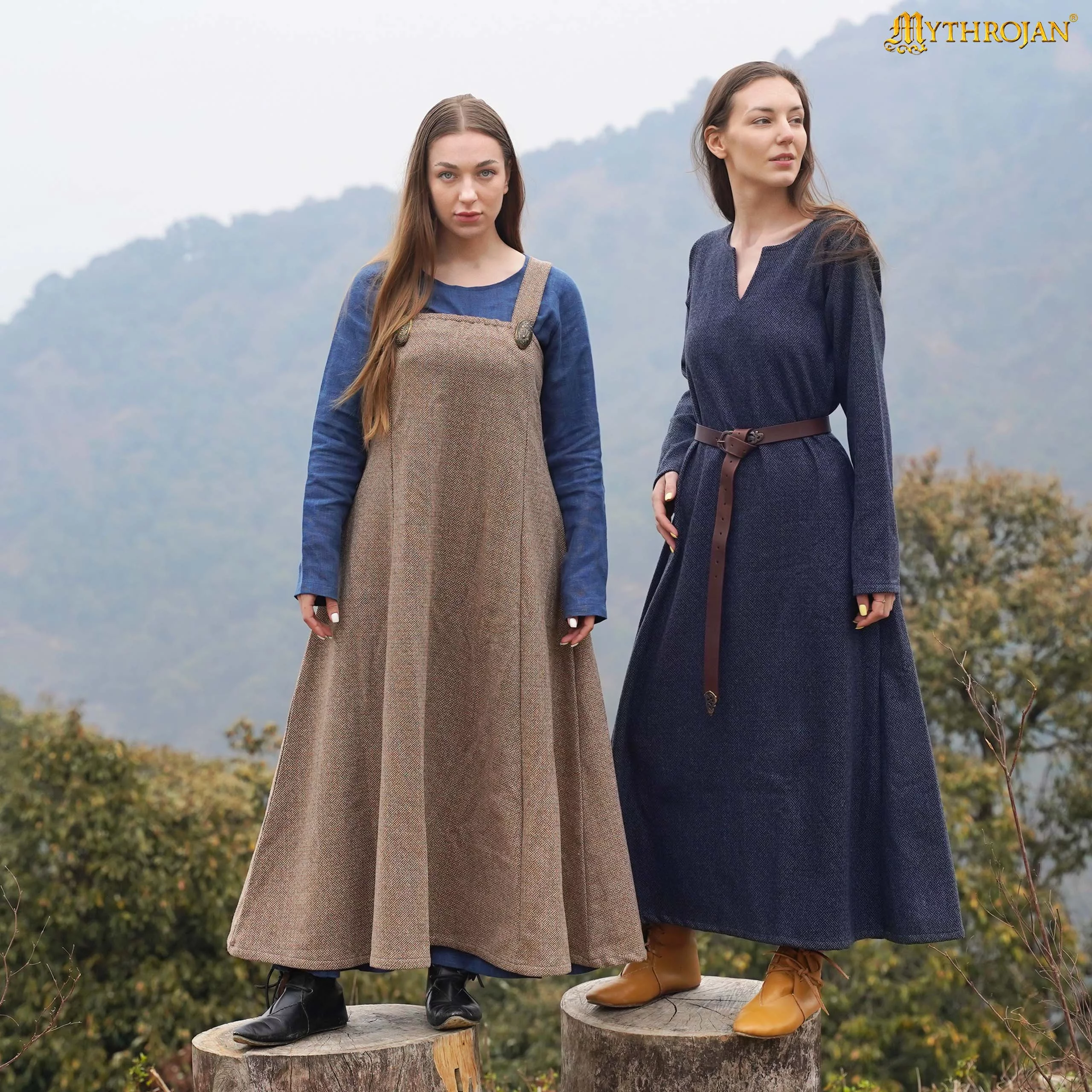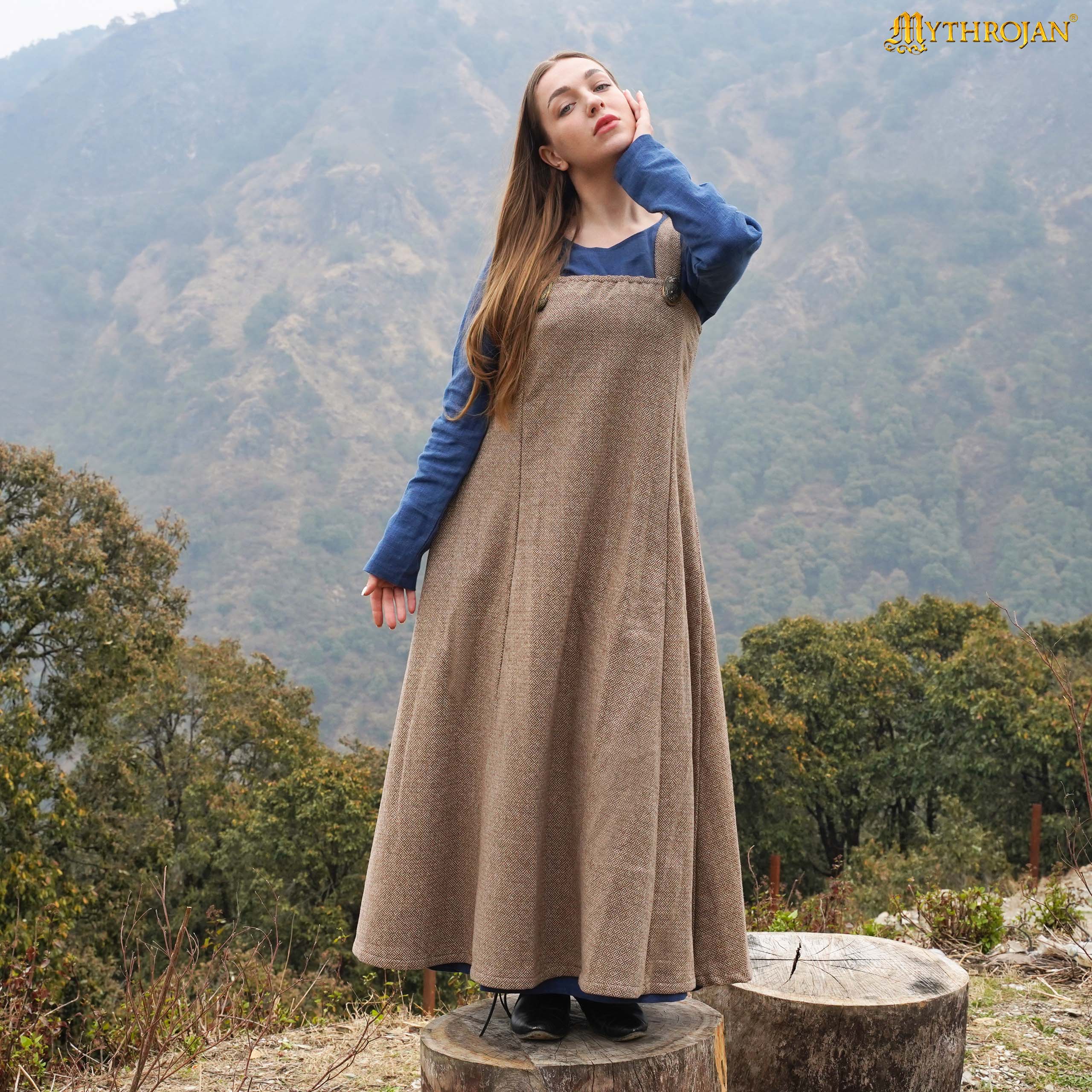What is a Hangerock or Smokkr?
The Hangerock or Smokkr is a distinctive garment of Viking Age women's clothing that has captivated both historians and historical reenactment enthusiasts. This dress, also known as an 'apron-dress' or 'Viking apron,' combines functionality with a design that reflects Scandinavian ingenuity and culture. While the exact term used by Viking women to refer to this garment is unknown, archaeological evidence and studies have allowed us to reconstruct its appearance and function.
Origin and Characteristics of the Smokkr
The Smokkr was used between the 8th and 11th centuries and was a common part of Scandinavian women's attire. Its design resembles a pinafore-style dress worn over a linen inner tunic, protecting it and serving as the primary garment.
- Functional design: It was a rectangular piece that covered the torso and was fastened with oval brooches over the shoulders.
- Materials: Generally, the Smokkr was made of wool, with a linen interior for added comfort. Some versions included decorative silk details.
- Ingenious fastening: The garment was secured with small fabric loops (often linen) hooked into bronze oval brooches, an iconic feature of Viking women's clothing.
Archaeological Evidence
Much of what is known about the Smokkr comes from archaeological findings in places like Birka, a major Viking trading town in Sweden. Textile fragments found in these sites provide essential clues about its construction and style.
- Fabrics: Remnants of blue wool and decorative silk bands showcase the Vikings' textile craftsmanship.
- Oval brooches: These brooches have been discovered in numerous burial sites, confirming their central role in fastening the Smokkr.
- Minimalist ornamentation: While functional, some Smokkrs included tablet-woven bands for decorative purposes. These weaving techniques created unique geometric patterns.

Modern Recreations
Historical reenactors and experts in Viking fashion have worked to recreate the Smokkr based on archaeological evidence and traditional weaving techniques. These representations help us better understand its daily use during the Viking Age.
- Authentic materials: Reconstructions use wool, linen, and silk decorations, replicating original designs.
- Oval brooches: These are crafted based on historical pieces, essential for the garment's authenticity.
- Decorative details: Some recreations include tablet-woven bands handmade for authentic geometric patterns and metallic fabric details, such as artificial gold threads.

Historical and Cultural Significance
The Smokkr not only served a practical function in Viking attire but also had a representative component of status and craftsmanship. Brooches and decorations might have reflected the wearer's wealth, while the use of advanced weaving techniques showcases Viking women's high level of skill in textiles.
| Element | Material | Function | Decoration |
| Main fabric | Wool | Dress body | Silk band |
| Interior | Linen | Comfort | No |
| Brooches | Bronze | Fastening | Yes |
| Tablet-woven band | Silk/Cotton | Decoration | Geometry |
















